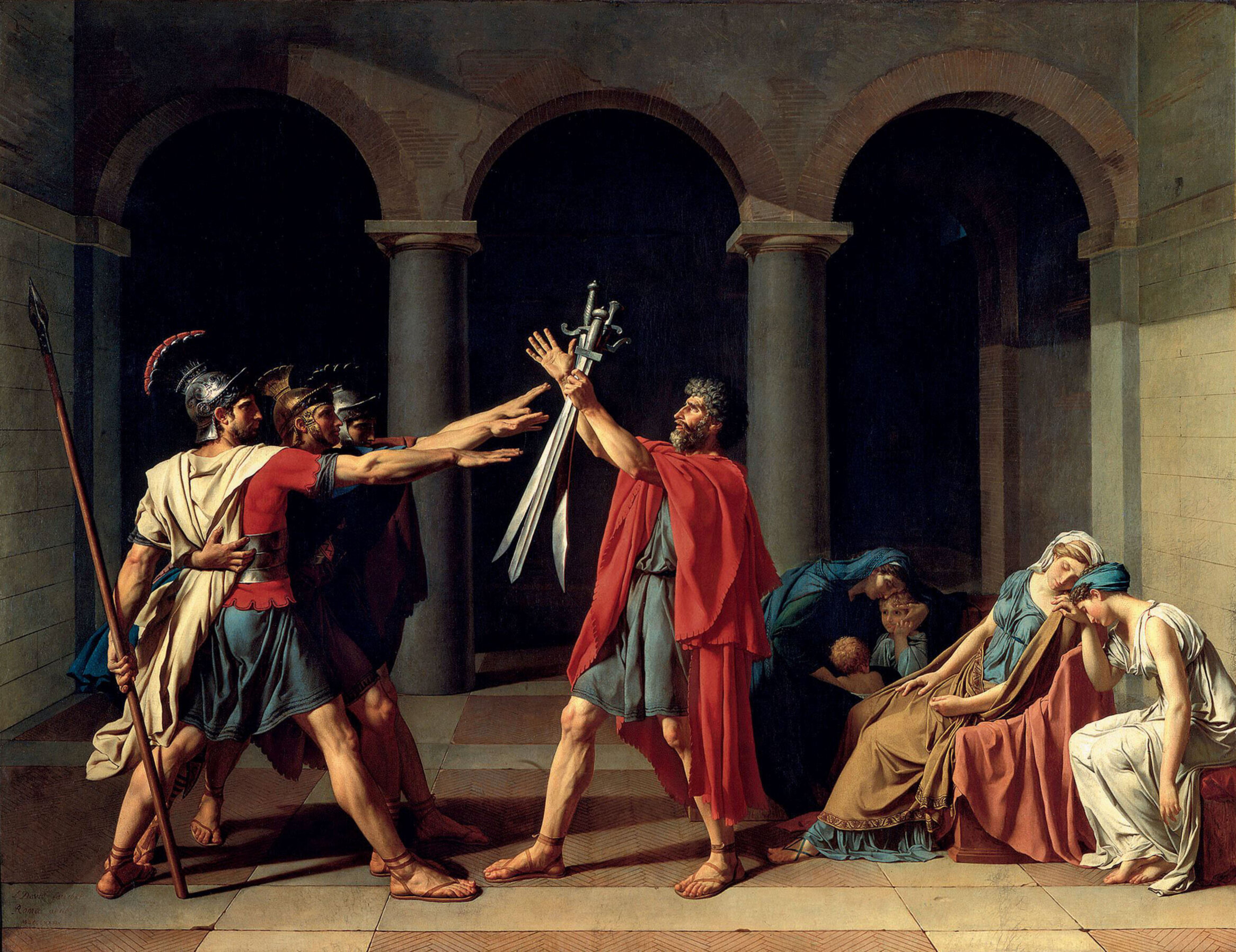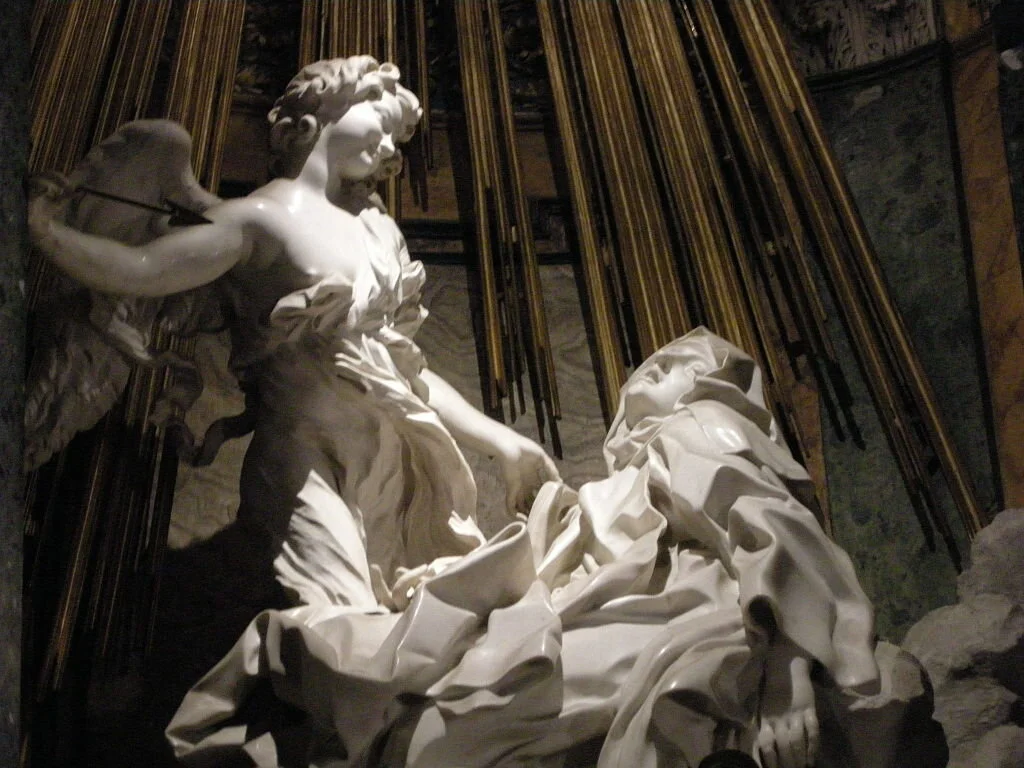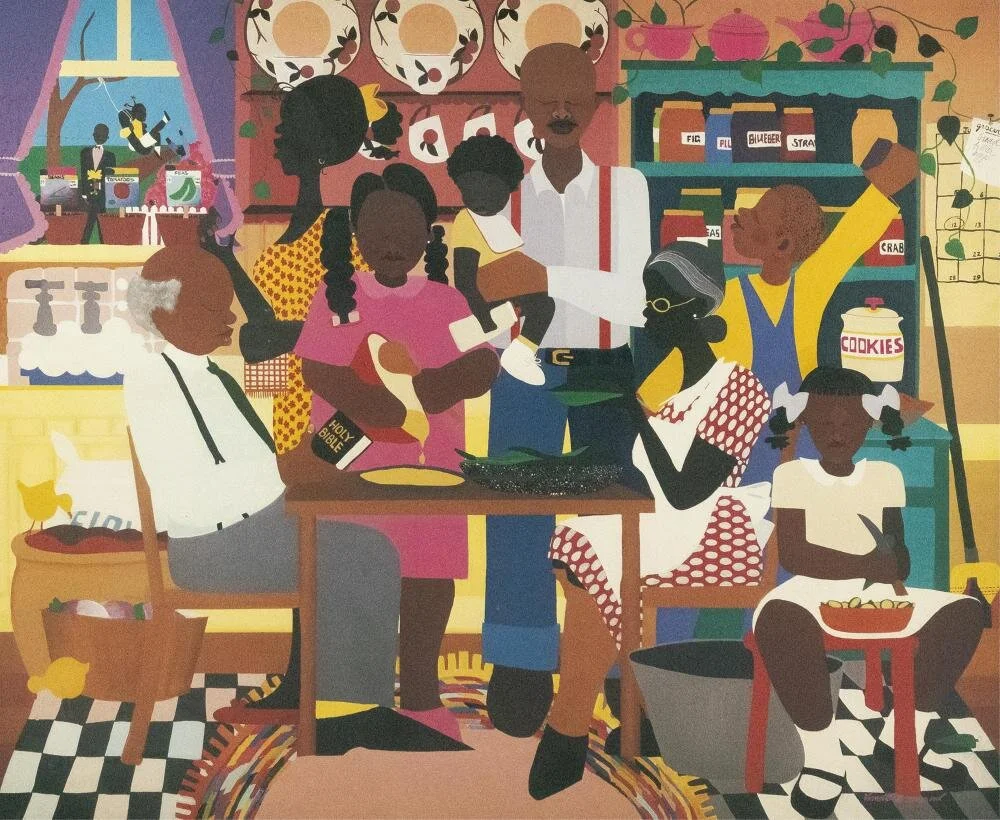Children Playing on the Beach, 1884 by Mary Cassatt.
Mary Cassatt is well known for her paintings of children where she presents the children naturally as opposed to being idealized or as mini adults.
Your Custom Text Here

Children Playing on the Beach, 1884 by Mary Cassatt.
Mary Cassatt is well known for her paintings of children where she presents the children naturally as opposed to being idealized or as mini adults.

Oath of the Horatii, 1785 by Jacques-Louis David.
By painting an ancient historical subject, David was hoping to encourage people to look back at the ancient world and model their actions on that society which had been held-up by many at this time as an example to be emulated. This work helped launch the Neoclassical movement.

Medusa, c. 1598 by Caravaggio.
Medusa has always been a popular character in art. The combination of female and monster seems to have been so tantalizing that most ancient and Renaissance artists had to take their turn. This work is a depiction of a ceremonial shield where the Gorgon is used to frighten enemies; a usage common in ancient art.

Still Life with Rose Wall and Compote 1973 by William Bailey.
Bailey still lifes are among my favorites. The simplicity appeals to me and the compositions look random, but you can tell are studied.

Ara Pacis, Roman Temple built for Augustus, 30-9 BCE, Rome.
Built to honor Augustus' battles in Spain and Gaul, the Ara Pacis was built as a celebration to the power of the Roman Empire and "peace" their dominance brought to them. Over the years it was buried as the city grew and was finally excavated in the 20th century.




The Recovery of his Majesty in the Year 1789 by Benjamin West.
West was born in Philadelphia and was largely self-taught, although he did study painting. He was a friend of Benjamin Franklin, whose portrait he painted and eventually moved to England to paint for King George III who is pictured here. Don't you love the heavens shining as the he returns to the throne.

The Land of Counterpane by Jessie Wilcox Smith
The Land of Counterpane by Robert Louis Stevenson
When I was sick and lay a-bed,
I had two pillows at my head,
And all my toys beside me lay,
To keep me happy all the day.
And sometimes for an hour or so
I watched my leaden soldiers go,
With different uniforms and drills,
Among the bed-clothes, through the hills;
And sometimes sent my ships in fleets
All up and down among the sheets;
Or brought my trees and houses out,
And planted cities all about.
I was the giant great and still
That sits upon the pillow-hill,
And sees before him, dale and plain,
The pleasant land of
.

Spring Flowers, c. 1889 by William Merritt Chase.
Chase considered himself an observer of life and which was a French method he applied to American landscapes and settings. This work also refers to the fashion of Japanese styles adapted in American households.

The Ecstacy of St. Teresa, 1645-1652 by Bernini, Cornaro Chapel.
"I saw an angel beside me toward the left side, in bodily form…He was not very large, but small, very beautiful, his face so blazing with light that he seemed to be one of the very highest angels, who appear all on fire. They must be those they call Cherubim…I saw in his hands a long dart of gold, and at the end of the iron there seemed to me to be a little fire. This I thought he thrust through my heart several times, and that it reached my very entrails. As he withdrew it, I thought it brought them with it, and left me all burning with a great love of God. So great was the pain, that it made me give those moans; and so utter the sweetness that this sharpest of pains gave me, that there was no wanting it to stop, nor is there any contenting of the soul with less than God”.


Bindo Altoviti, c. 1515 by Raphael.
Earlier interpretations thought that this work was a self-portrait. It is now generally agreed that it is an early portrait of the prominent Florentine banker, Bindo Altoviti.

Time Tranfixed, 1938 by René Magritte.
The world of dreams that came out of Surrealist paintings is presented by Magritte in a straightforward and clear manner. This allows the viewer to concentrate on the image and what it means rather than looking at the image and spending time figuring out what it is, what it is is immediately evident - so that leaves, what does it mean.

Old Fashioned Dinner Party, by Varnette Honeywood.
Although the two images of Honeywood's work I have depicted here on YDA have revolved around church life, she actually chooses to portray a lot of different types of settings in her artwork, such as this extended family preparing a meal together.

The Shepard’s Dream from Paradise Lost 1893 by Henry Fuseli.
Fuseli's depiction of fallen angels inhabiting the dreams of the shepherd as he sleeps comes from John Milton’s Paradise Lost. At once with joy and fear his heart rebounds.

The Sacred Hour, ca. 1907-77 by Ferdinand Hodler.
Early in his career Hodler painted mostly landscapes but as he became exposed to more styles such as symbolism and expressionism. his work became more complex however, near the end he returned to landscapes.

The Two Gentleman of Verona Valentine Rescuing Sylvia from Proteus by William Holman Hunt.
One of the original Pre-Raphaelites, Hunt takes his subject from a Shakespeare play. The PRB liked to get their subjects from literature and to paint out of doors in natural light. I'm sure the model for Sylvia Elizabeth Siddal, had sore knees.

Two Girls Fishing, 1912 by John Singer Sargent.
Sargent frequently choses women as subjects and although he painted many on commission, he also painted them when the work he was doing was for himself. He seems to empower them through the beauty with which he portrays them.

Number 1, 1950 by Jackson Pollock.
There is a lot of controversy surrounding a recent collection of Jackson Pollock's work. Read more about the paintings to be attributed to him. Provenance

Joseph and Marie-Louise by Sarah Robertson.
Sarah Robertson was a Canadian artist and member of the woman's painting group known as the Beaver Hall Group . They were friends and contemporaries of the men's group "The Seven" but never achieved the same level of recognition. Wayside crosses.

The Fairy Feller's Master-Stroke, 1855-64 by Richard Dadd.
Richard Dadd was known as "Mad Dadd" he spent much of his life in an insane asylum after murdering his father whom he was convinced was the devil. His intricate paintings took him years to complete.

Death of Marat by Jacques-Louis David.
David ushered in a return to classical ideals and away from the Rococo with this homage to the death of his friend. Marat was an outspoken leader of the French Revolution and was murdered in his bath after receiving a letter of admission into his home for the murderer. David's stark scene conveys the shock and sadness he felt after learning Maret had been killed.